In this episode (YouTube version below), I sat down in the Shed with veteran Portland bike fun purveyor and artist Shawn Granton. Shawn has been involved with the local bike seen since 2002 and has created art for many rides and events over the years. A comic illustrator published in Momentum and Bicycle Times magazines (rest in peace) and creator of numerous local event flyers, Shawn is the author of the Urban Adventure League blog, a collaborator on popular Zinester’s Guide to Portland, and leader of several well-known local rides such as the Dead Freeways Ride and the Palm Tree Ride.
We talked about:
- What it was like moving to Portland in 2001 and how Shawn got into the bike scene
- Shawn’s first Portland bike that he bought at Citybikes in 2001
- How a sticker Shawn made in 2002 led to creation of the Midnight Mystery Ride, which is still held monthly to this day
- Why Shawn doesn’t like rain jackets
- His favorite local bike camping overnighter spots
- Going back to school for a geography degree
- The 20th anniversary of Shawn’s Palm Tree Ride and why he likes to stick up for “weird” palm trees
- How online algorithms rob people of the serendipity of discovering things on bike rides
- and more!
Links:
- Urban Adventure League blog
- Urban Adventure League on Instagram
- BikePortland story about Shawn’s Winter Palm Tree Ride (2008)
Thanks for listening and watching.


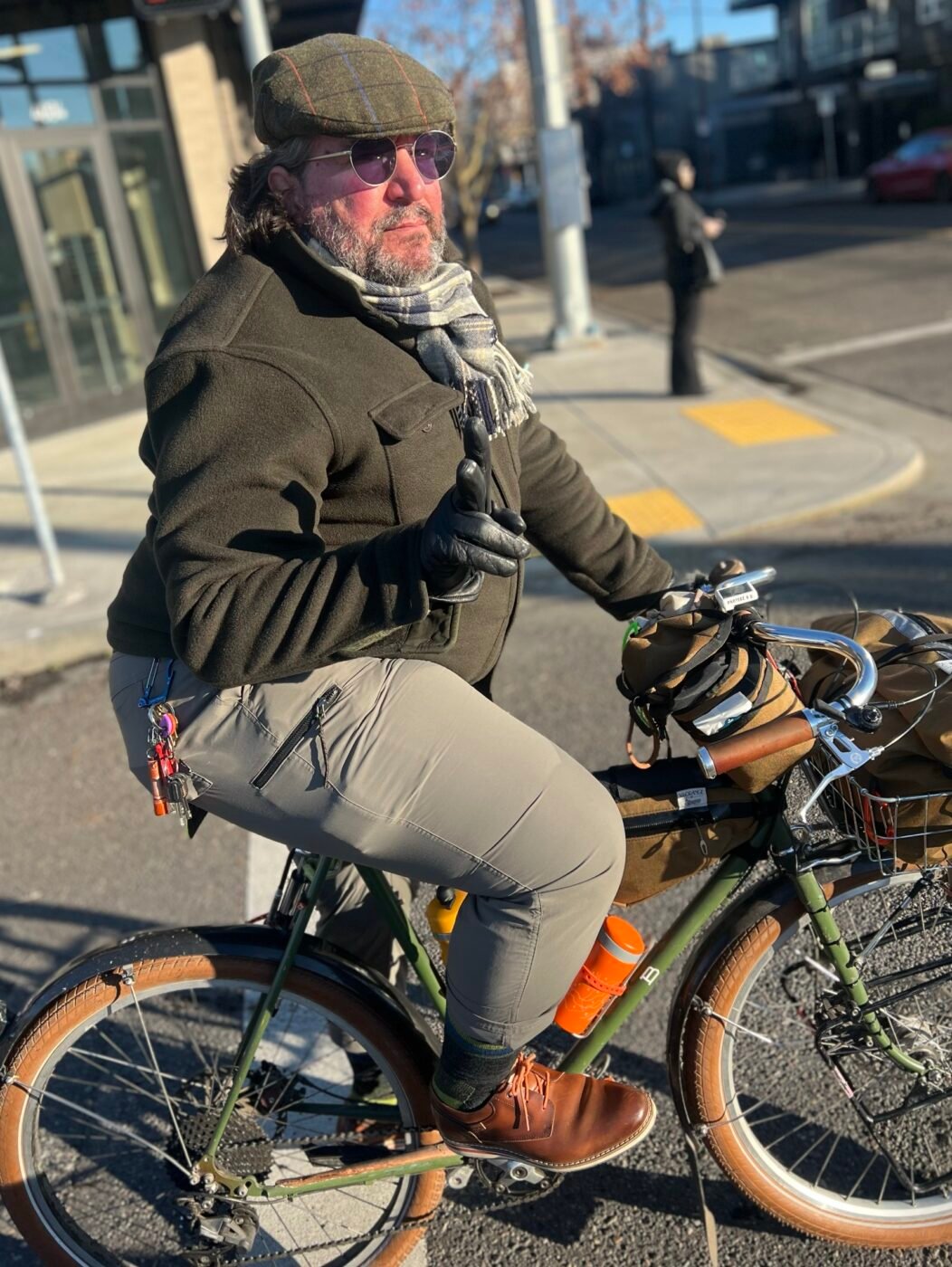
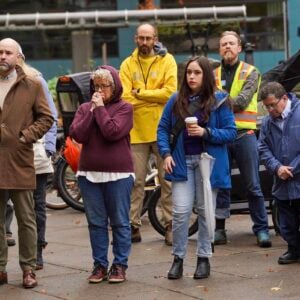
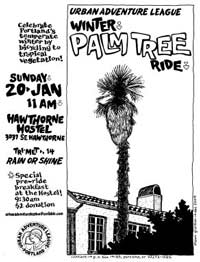
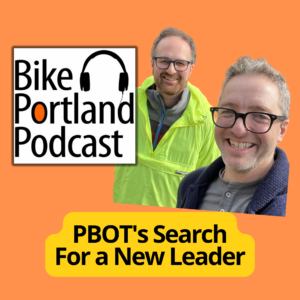
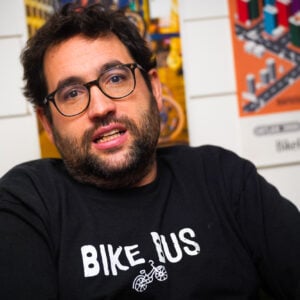
Thanks for reading.
BikePortland has served this community with independent community journalism since 2005. We rely on subscriptions from readers like you to survive. Your financial support is vital in keeping this valuable resource alive and well.
Please subscribe today to strengthen and expand our work.
When Shawn’s now classic Palm Tree ride first started, I may have been among the poo-pooers, although not because of any association with the great State California, the source of many a great Portland transplant. My particular gripe was that palms are a poor substitute to most botanical trees in terms managing urban stormwater run-off and certainly less beneficial than historic/indigenous/endemic tree species in supporting the region’s historic/indigenous/endemic biodiversity. So while I think cities would be served by better adapting themselves to their regional environments, they are also international multi-cultural hubs and Shawn has made a strong case that Portland’s palms should be part of that unique Portland esthetic and deserve a little (more) love.
Thanks, Jim! Though when you pooh-poohed my ride (back on this very website in 2008), you did associate the ride with California:
https://bikeportland.org/2008/01/18/its-winter-it-must-be-time-for-a-palm-tree-ride-6309
Anyways, glad to see that your views have softened. My take is that Portland is a town that is lacking in historic/indigenous/endemic tree species, but we don’t think that because the trees “look right”. Actual native tree species beyond ubiquitous Douglas-firs and other conifers are few and far between, and what we have are usually located in either marginal or designated natural areas. If we were really concerned with native trees, when you picked out a tree to be planted in your parking strip by Friends of Trees, you’d be picking out Oregon White Oak and Bigleaf Maple, not Eastern White Oak and Red Maple, trees “native” to the Eastern part of the US.
Much of our urban canopy is made up of trees not from here but instead species endemic to east of the Rockies (and often east of the Mississippi.) No one makes a big deal of these non-natives. But people will notice something that looks a little more exotic, like a palm. Does a palm have less of a right to be here than the American hop hornbeam in front of my house?
And while climate change is real, the majority of palms growing in Portland are native to regions that have a similar climate to us (often in places that see regular snow). I know some people think palms can only grow here because it’s gotten warmer, and while it indeed has gotten warmer, it’s not the case for our “local” palms.
“””Actual native tree species beyond ubiquitous Douglas-firs and other conifers are few and far between”””
What are you talking about? Do you just mean they aren’t well represented in town or that there isn’t a lot of native variety here in western Oregon/Washington? I’ll accept the former but not the latter.
See my reply to your reply on the COTW post.
Busted! Nice sleuthing! I stand corrected on my past California comment. But I intentionally did not say “native” trees in my post above and stand by my the point that historic/indigenous/endemic trees do provide desirable functions and values that other trees or palms don’t or don’t as much. For that reason I do think prioritizing them in the very areas- that you point out- they are scarcer is better policy and personal practice. From a stormwater perspective alone a Hornbeam would be a better choice than a palm, and an Oregon White Oak (OWO) or Big Leaf Maple (BLM) would be even better. A palm tree- which is biologically is closer to grasses than trees- is the least beneficial choice. Does this mean I am for banning palms in people’s yards or even in the public right-of-way? Heck no. Palms have a place and may even have public place for cultural functions and values, but I’d want that to be the exception not the rule. What you say about palms being climatically adapted is true in most, but not all, cases of palms that get planted in Portland. [Parenthetically to your point, I was very disappointed recently when the City would not let me plant an OWO in my planting strip because of the overhead wires ]. But I am being debating minor points. In the big picture, we might agree that if we really want to improve the urban canopy we need to (1) keep planting a diversity of street trees (especially OWO and BLM) since the over-planting columnar maples (not palms) is the cause of our declining urban forest diversity, (2) plant more large form trees, and (3) create more space to plant large form trees in the public right of way, especially in the neighborhoods beyond 82nd Ave where street trees and space for street trees is most scare. Street trees should be our focus because they provide the most positive environmental benefits where we see the most negative environmental impacts from vehicles, pavement and driving.
Oh my gosh Jim this is such a neat comment. Might have to make it COTW.
Oh no! Shawn has been takin’ to the shed!! 😉
This was a fun interview. I really enjoy hearing Portland and biking genesis/journey stories.
Hope to catch some of Shawn’s rides.
Also, would love to do a camperdown elm or banana tree ride! Both?
Thanks for this interview, Shawn is truly a bike funnist emeritus. Shawn’s rides have all the things i admire I in classic Shift rides : easy pace, low stress streets, interesting stops based around a topic, with tantalizing bits of Portland history to learn from a passionate enthusiast. No shade to the umpteenth edition of the (your pop culture fixation here) Ride, so prevalent in today’s Bike Summer, but i guess I could be a bike retrogrouch.